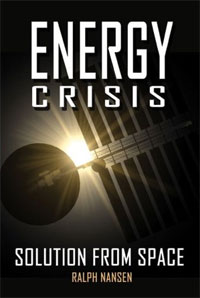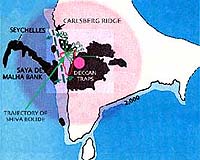http://www.foxnews.com/
- AP
- December 30, 2009
Russia's space chief said Wednesday his agency will consider sending a spacecraft to a large asteroid to knock it off its path and prevent a possible collision with Earth.
MOSCOW — Russia is considering sending a spacecraft to a large asteroid to knock it off its path and prevent a possible collision with Earth, the head of the country's space agency said Wednesday.
Anatoly Perminov said the space agency will hold a meeting soon to assess a mission to Apophis, telling Golos Rossii radio that it would invite NASA, the European Space Agency, the Chinese space agency and others to join the project once it is finalized.
When the 885-foot asteroid was first discovered in 2004, astronomers estimated the chances of it smashing into Earth in its first flyby in 2029 were as high as 1-in-37, but have since lowered their estimate.
SLIDESHOW: How Could Scientists Prevent an Asteroid Impact?
Further studies ruled out the possibility of an impact in 2029, when the asteroid is expected to come no closer than 18,300 miles above Earth's surface, but they indicated a small possibility of a hit on subsequent encounters.
In October, NASA lowered the odds that Apophis could hit Earth in 2036 from a 1-in-45,000 as earlier thought to a 1-in-250,000 chance after researchers recalculated the asteroid's path. It said another close encounter in 2068 will involve a 1-in-330,000 chance of impact.
Without mentioning NASA findings, Perminov said that he heard from a scientist that Apophis is getting closer and may hit the planet. "I don't remember exactly, but it seems to me it could hit the Earth by 2032," Perminov said.
"People's lives are at stake. We should pay several hundred million dollars and build a system that would allow to prevent a collision, rather than sit and wait for it to happen and kill hundreds of thousands of people," Perminov said.
Scientists have long theorized about asteroid deflection strategies. Some have proposed sending a probe to circle around a dangerous asteroid to gradually change its trajectory. Others suggested sending a spacecraft to collide with the asteroid and alter its momentum, or using nuclear weapons to hit it.
Perminov wouldn't disclose any details of the project, saying they still need to be worked out. But he said the mission wouldn't require any nuclear explosions.
Hollywood action films "Deep Impact" and "Armageddon," have featured space missions scrambling to avoid catastrophic collisions. In both movies space crews use nuclear bombs in an attempt to prevent collisions.
"Calculations show that it's possible to create a special purpose spacecraft within the time we have, which would help avoid the collision without destroying it (the asteroid) and without detonating any nuclear charges," Perminov said. "The threat of collision can be averted."
Boris Shustov, the director of the Institute of Astronomy under the Russian Academy of Sciences, hailed Perminov's statement as a signal that officials had come to recognize the danger posed by asteroids.
"Apophis is just a symbolic example, there are many other dangerous objects we know little about," he said, according to RIA Novosti news agency.












